10 Best Exercises to Superset with Shoulder Press
If you’re looking to ramp up your Shoulder Press routine, you’re in the right place.
Supersetting is an excellent strategy to intensify your workouts, save time, and accelerate muscle growth. In this article, I’ll share some of the most effective exercises to pair with Shoulder Press for optimum results.
Whether you’re a beginner or a seasoned athlete, these recommendations will take your training to the next level.
Keys to Choosing an Exercise to Superset with Shoulder Press
Choosing the right exercise to superset with Shoulder Press is crucial for an effective and balanced workout plan.
Here are some key factors to consider:
Muscle Groups Targeted
Look for exercises that either target the opposing muscle groups (like the back or triceps) or complement the shoulder muscles.
This ensures a balanced workout and reduces the risk of injury.
Intensity
The exercise you pair should be challenging but not to the point where it severely hampers your ability to perform your Shoulder Press effectively.
Equipment Availability
Ideally, choose exercises that use the same or similar equipment as Shoulder Press to make the transition between exercises quick and seamless.
Or, if you’re working out at home, know your equipment limitations. For instance, if you have one barbell, trying to superset Shoulder Press with Back Squat would be a logistical nightmare.
Workout Goals
Whether your aim is muscle gain, endurance, or fat loss, the chosen exercise should align with your overall goals.
Best Exercises to Superset with Shoulder Press
Here are my favorite exercises to pair up with Shoulder Press (whether you’re using a barbell or dumbbells by the way), in no particular order.
Pull-Ups
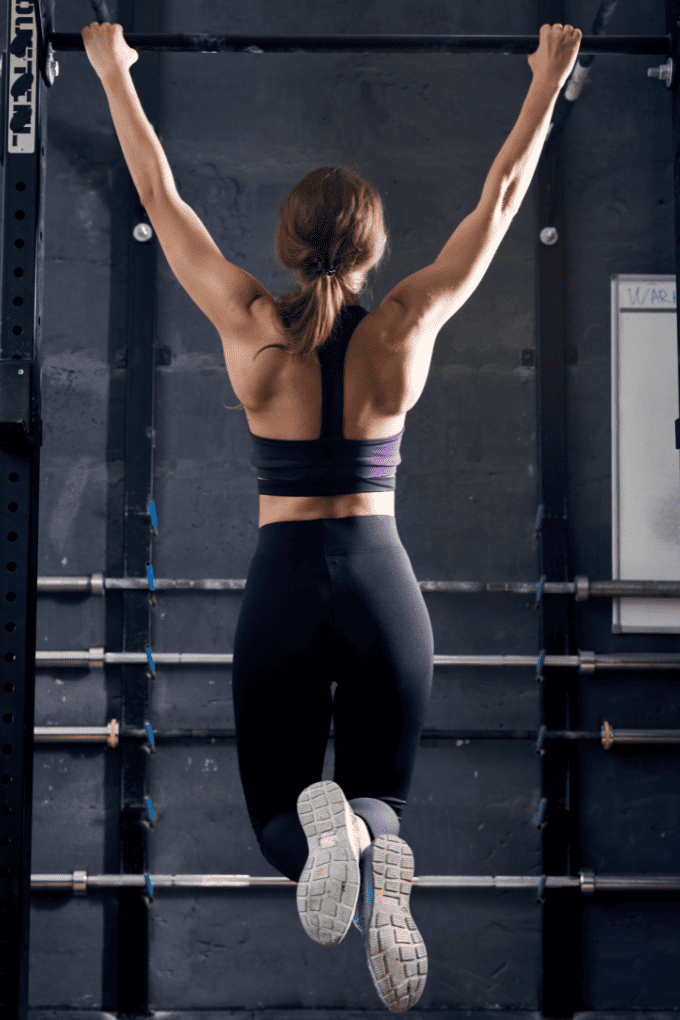
Why: A classic back exercise, Pull-Ups target the opposing muscle groups to the shoulders, ensuring a balanced upper-body workout.
How To
- Approach the pull-up bar and grab the bar with a pronated grip (palms facing away).
- Use a bench to get to the bar if it is too high.
- Later in the article, I will talk about variations, alternatives, and modifications where the supinated (palms facing in) grip will be discussed.
- Squeeze the bar and engage the core muscles and do not cross your legs.
- Engage the upper back and pull up until your chin is over the bar.
- Pause for 1 second with your chin over the bar.
- Slowly lower yourself back to the starting position.
Lateral Raises
Why: Lateral Raises isolate the deltoids, adding volume and intensity to the shoulder muscles you’re already working on during the Shoulder Press.
How To
- Hold dumbbells-palm in, arms straight down at sides.
- Raise dumbbells in semicircular motion slightly above shoulder height tilting the head of the dumbbell down.
- A slight pause, then lower to starting position under control.
- Keep your arms straight with just a slight bend in the elbow.
- Use the same path to continue repeated reps.
Face Pulls
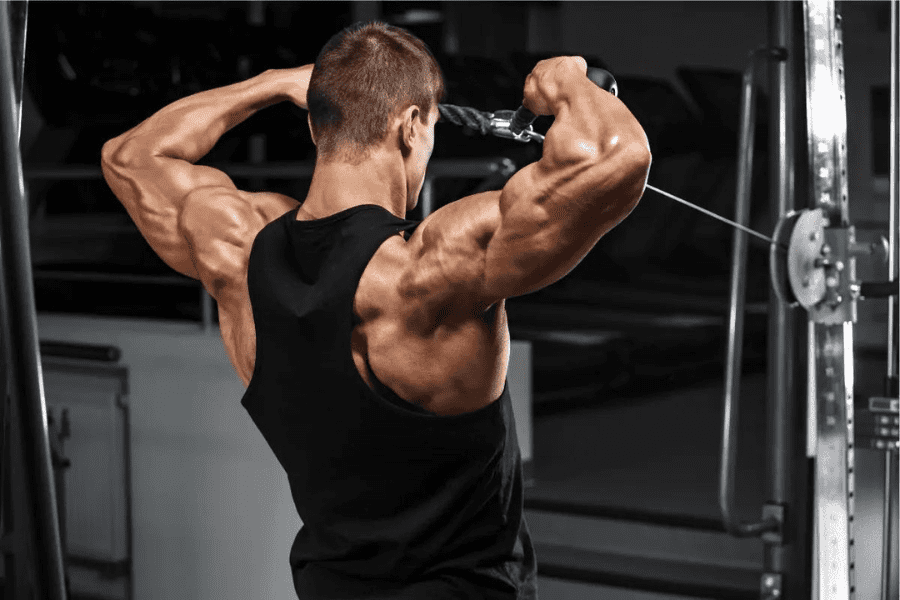
Why: Great for shoulder health, Face Pulls work the rear delts and upper traps, balancing out the heavy anterior deltoid work in shoulder pressing.
Can be done with a cable (as pictured above) or with a Resistance Band.
How To
- To begin, adjust the cable machine to a high setting and attach a rope attachment to the pulley.
- Stand facing the cable machine with your feet shoulder-width apart and grasp the rope with both hands, using a neutral grip (palms facing each other).
- Extend your arms in front of you so that the rope is taut, and step back slightly to create tension in the cable.
- Engage your core and maintain a neutral spine as you pull the rope towards your face, keeping your elbows wide and your hands level with your ears.
- As you pull the rope towards your face, squeeze your shoulder blades together and imagine that you are trying to pinch a quarter between your shoulder blades.
- Hold the contraction for a moment, then slowly release the tension in the cable and return to the starting position.
Plank
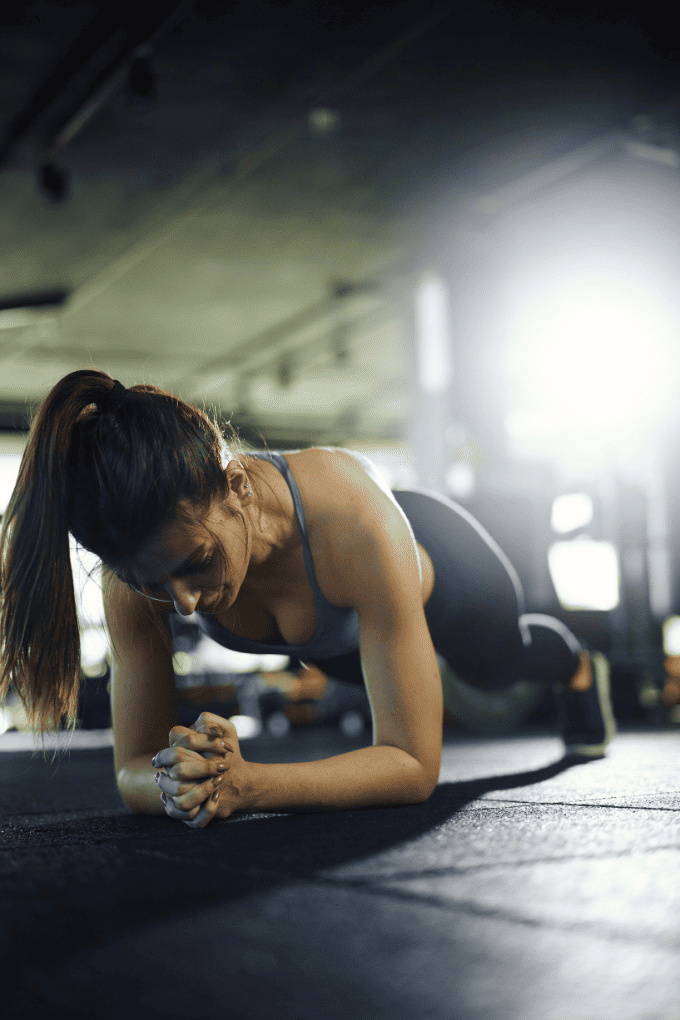
Why: A core exercise that requires no additional equipment, planking in between sets can help improve posture and core strength, which are essential for effective pressing movements.
How To
- Start on the ground on your stomach.
- Assume a push-up like position on your elbows and toes. Elbows should be directly under the shoulders.
- Position your body in a straight line from the shoulders through the hips, knees and ankles.
- Brace the core tight. (As if you’re going to be punched in the stomach)
- Do not let the body slouch to the ground nor push the hips up high in the air.
- Hold for the designated amount of time.
Bent Over Barbell Rows
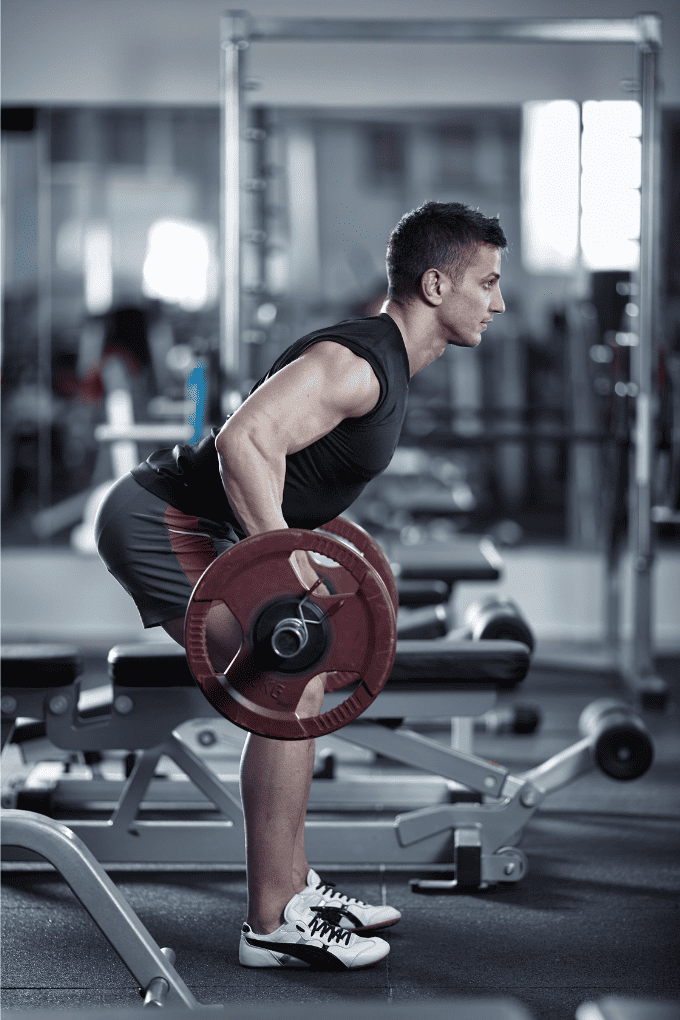
Why: Bent Over Barbell Row is a compound exercise that engages the back muscles, helping to counterbalance the work done by the anterior deltoids in the shoulder press.
How To
- Approach the barbell and take a shoulder-width stance. Your shins should be almost touching the barbell.
- Hinge at the waist and bend the knee until you can grab the barbell. Use a pronated grip (Knuckles facing the floor). I will talk later about the supinated grip (palms up) in this movement.
- Always keep a flat back, and a neutral spine, and keep your eyes focused slightly down about 1 foot in front of you.
- Take a deep breath, brace the abdomen, and pull the bar in until it makes contact right about the belly button.
- Pause for about 1 second. Squeeze the shoulder blades and lock in the rep.
- Slowly return the barbell back to the starting position
Barbell Curls
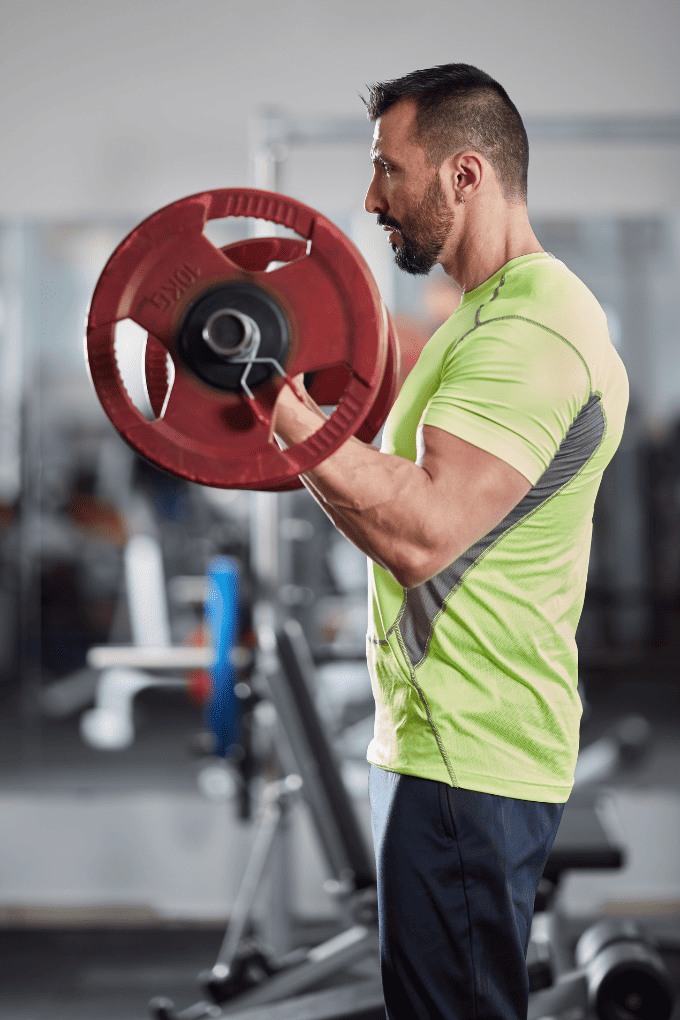
Why: Working the biceps with an exercise like Barbell Curls can offer a nice counterbalance to the tricep and shoulder work, making your superset balanced.
How To
- Stand tall, back straight, head up, feet shoulder-width apart.
- Hold the barbell with both hands, palms up (supinated grip).
- Start with the bar at arm’s length against the upper thighs.
- Curl the bar up towards the shoulders until the forearms touch the biceps.
- Keep upper elbows close to the side.
- Lower the bar back to starting position using the same path.
Rear Delt Raise
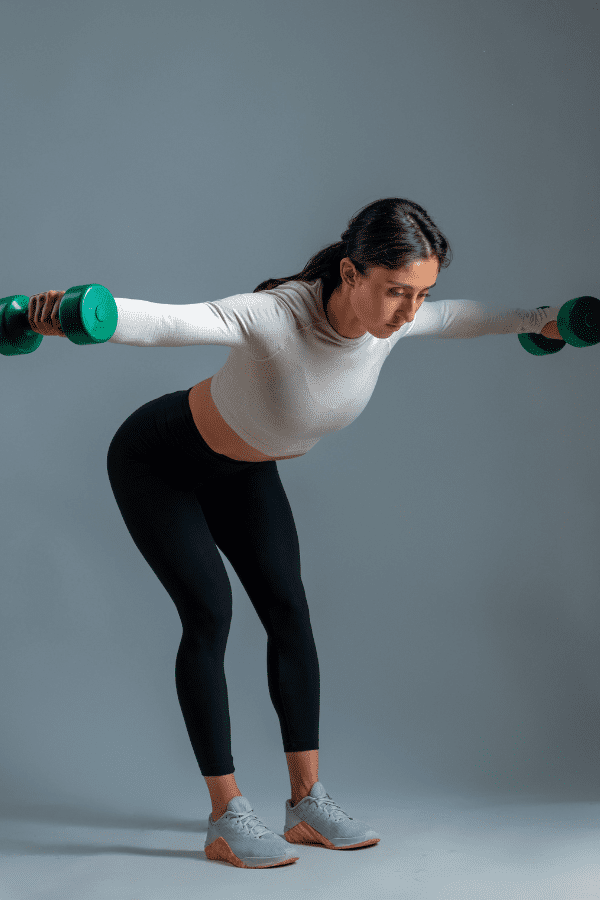
Why: As the name implies, Rear Delt Raises focus on the rear deltoids, which are often neglected but are crucial for shoulder stability and balance.
How To
- Grab your dumbbells (or plates) and bend at the waist until you are close to perpendicular to the floor.
- I recommend slightly bending the elbow and keeping your palms facing each other. As you execute the movement, the palms will face the floor.
- Initiate the movement by bringing your arms out to the side and squeezing the shoulder blades.
- Pause at the top of the movement for about 1 second.
- Slowly lower your arms back to the starting position.
Dumbbell Shrugs
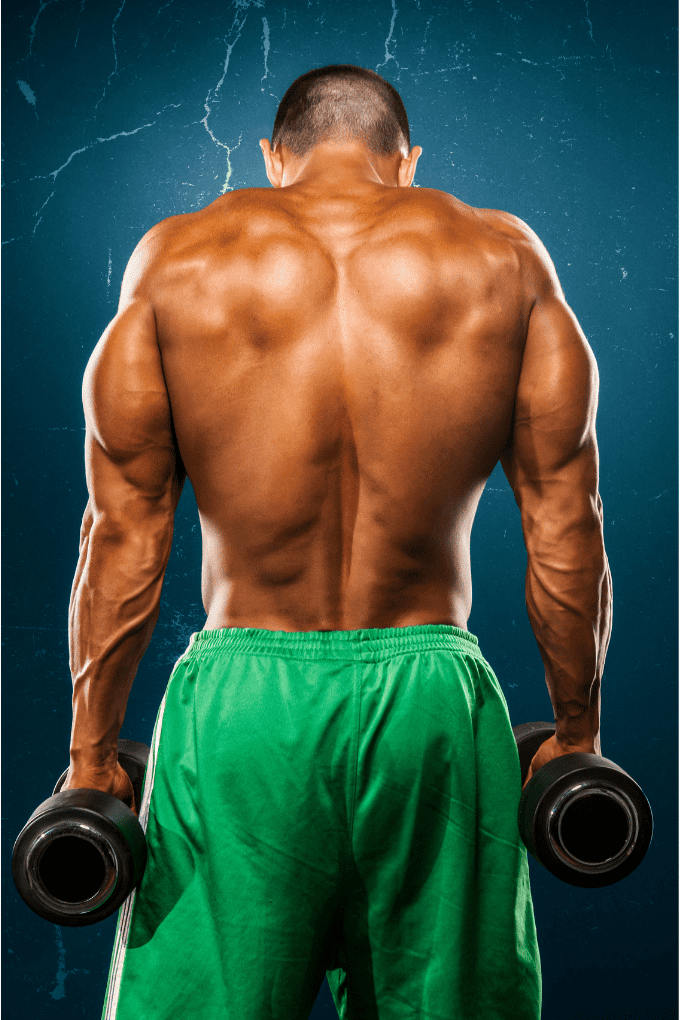
Why: Targeting the upper traps, Dumbbell Shrugs complements Shoulder Press by building strength and stability in the upper back.
How To
- Grab a pair of dumbells, one in each hand
- Place feet hip-width apart, brace the core and stand tall
- Now shrug up, visualizing touching your traps to your ears.
- Do NOT ‘roll’ the shoulders. Shrug straight up and straight down.
- Keep good posture. Do not let the shoulders slouch forward during the set.
- Control the weight back down to the starting position and repeat.
Seated Cable Row
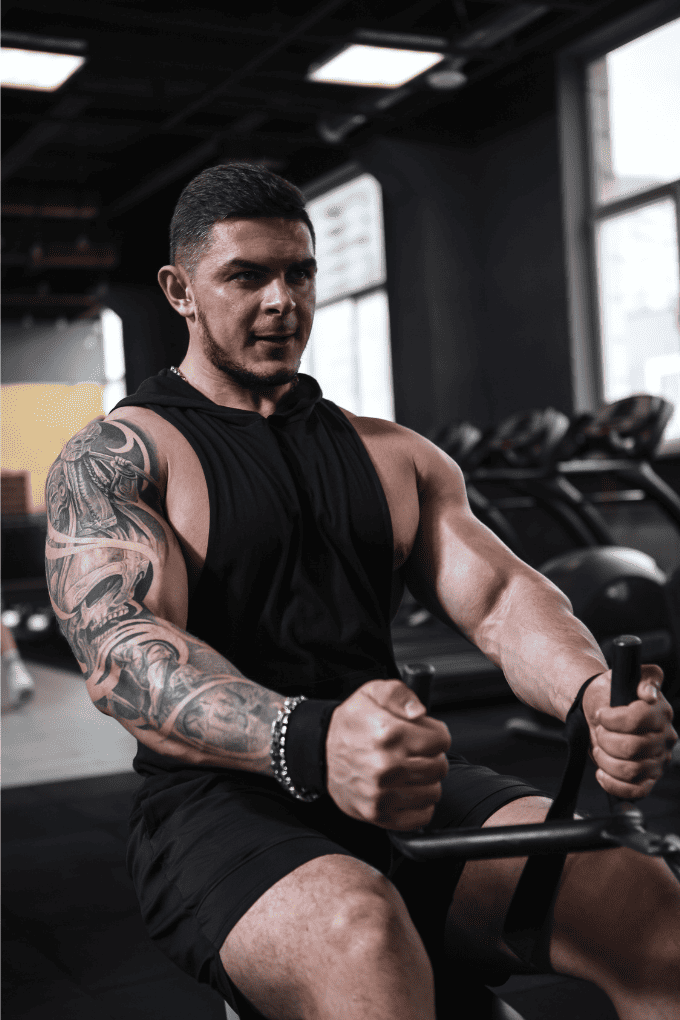
Why: Seated Cable Rows focus on the mid-back, acting as a counterbalance to the front-focused shoulder press. It also aids in improving posture and upper-body strength.
How To
- Begin by setting up a cable machine with the desired weight. Adjust the seat of the machine so that it is at a comfortable height for you to sit on.
- Sit on the bench and plant your feet firmly on the ground (or foot plate). Grasp the handle attached to the cable with an overhand grip, making sure that your arms are extended straight in front of you.
- Engage your back muscles and pull the handle towards your body, bringing your elbows back as far as you can. Keep your chest up and your back straight throughout the movement.
- Hold the contracted position for a moment, then slowly return to the starting position.
Mountain Climbers
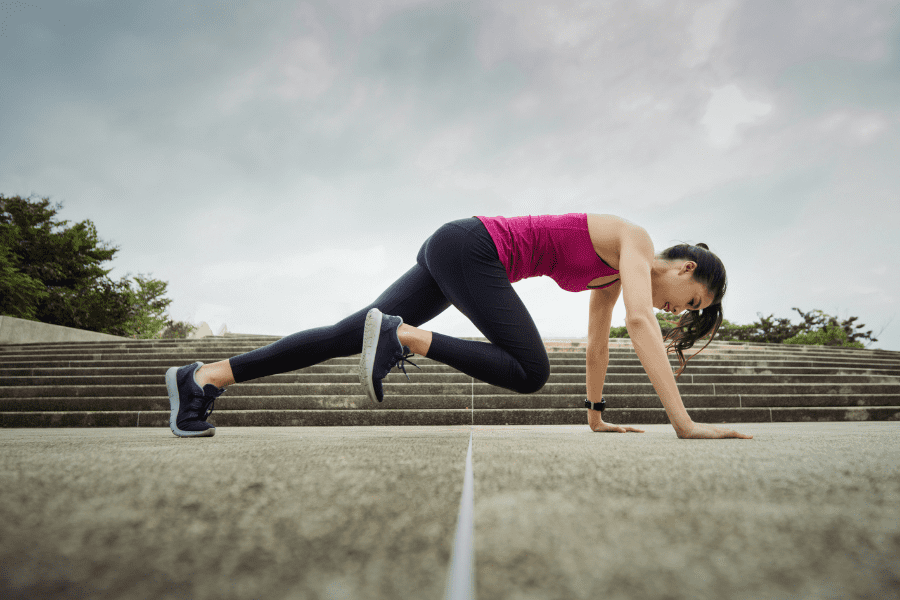
Why: A full-body exercise that boosts cardiovascular fitness and targets the core. Mountain Climbers offer a dynamic change of pace and can be easily done between sets without needing equipment.
How To
- Begin in a push-up position – hands under shoulders, core engaged, body in a straight line
- Now raise one knee toward the chest and place the ball of the foot on the ground – from this position you’re ready to begin performing reps.
- Drive one leg up and place the foot right next to where the opposite foot just left.
- Simultaneously extend the ‘up foot’ back to the original starting position.
- Continue alternating back and forth until all reps are completed.

Online Strength Programs
- 1-on-1 Online Coaching
- Sports Performance Programs for Football, Basketball, Soccer & More
- Programs for Former Athletes (Legends) Who Still Want to Train Like Athletes
- Programs for Adults Who Want to Get Healthy (and look great at the beach!)
- Use Code “HB10” to Get 10% Off Today
Final Thoughts
Supersetting can be a game-changing addition to your workouts. It not only maximizes your time in the gym but also offers a comprehensive approach to upper-body training.
We’ve sifted through a multitude of exercises to bring you ten standout choices, each with its own set of benefits, from muscle balance and joint health to strength and endurance gains.
So the next time you’re gearing up for a Shoulder Press workout, consider integrating one or more of these supersets to elevate your training and achieve optimum results.

